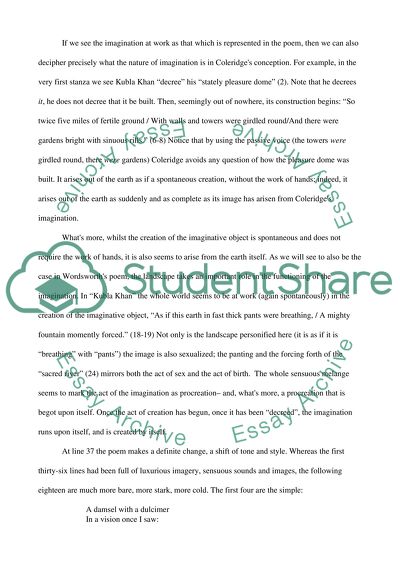Cite this document
(The Nature of Imagination in British Poetry Article Example | Topics and Well Written Essays - 2250 words, n.d.)
The Nature of Imagination in British Poetry Article Example | Topics and Well Written Essays - 2250 words. https://studentshare.org/literature/1535819-compare-and-differentiate-the-nature-of-the-imagination-in-tintern-abbey-by-william-wordsworth-and-kubla-khan-by-samuel-taylor-coleridge
The Nature of Imagination in British Poetry Article Example | Topics and Well Written Essays - 2250 words. https://studentshare.org/literature/1535819-compare-and-differentiate-the-nature-of-the-imagination-in-tintern-abbey-by-william-wordsworth-and-kubla-khan-by-samuel-taylor-coleridge
(The Nature of Imagination in British Poetry Article Example | Topics and Well Written Essays - 2250 Words)
The Nature of Imagination in British Poetry Article Example | Topics and Well Written Essays - 2250 Words. https://studentshare.org/literature/1535819-compare-and-differentiate-the-nature-of-the-imagination-in-tintern-abbey-by-william-wordsworth-and-kubla-khan-by-samuel-taylor-coleridge.
The Nature of Imagination in British Poetry Article Example | Topics and Well Written Essays - 2250 Words. https://studentshare.org/literature/1535819-compare-and-differentiate-the-nature-of-the-imagination-in-tintern-abbey-by-william-wordsworth-and-kubla-khan-by-samuel-taylor-coleridge.
“The Nature of Imagination in British Poetry Article Example | Topics and Well Written Essays - 2250 Words”. https://studentshare.org/literature/1535819-compare-and-differentiate-the-nature-of-the-imagination-in-tintern-abbey-by-william-wordsworth-and-kubla-khan-by-samuel-taylor-coleridge.


